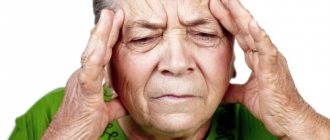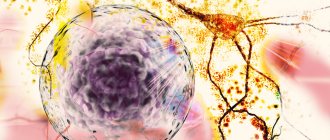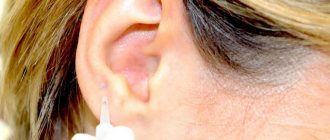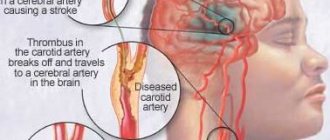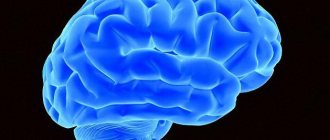ICD-10 is a universal coding method that includes information about all known disorders, pathologies, and diseases. Behind each of its codes lies the structure of diseases, their causes, and methods of treatment. Parkinson's disease code ICD 10 also includes. This pathology is one of the severe disorders of the nervous system that cannot be cured today.
Description
Vascular parkinsonism.
A decrease in the number, amplitude and speed of voluntary movements against the background of muscle rigidity, etiopathogenetically associated with the presence of cerebrovascular pathology. Clinically manifested by slowness, shuffling gait, postural instability, facial hypomimia, and a tendency to depression. The vascular genesis of the disease is established on the basis of ultrasound data of intra- and extracranial vessels and cerebral neuroimaging. Treatment is predominantly conservative, consisting of basic (vascular) and symptomatic (antiparkinsonian) therapy.
Symptoms and signs
This disease has a number of features that distinguish it from other pathologies of the nervous system:
- Trembling in the limbs and muscles of the head.
- Inability to perform monotonous work associated with fine motor skills for a long time due to increased muscle tone, stiffness, and severe tension.
- The presence of this disease can also be indicated by the position that the patient takes at rest. As a rule, the head is tilted forward, the limbs are tucked, the back is hunched.
- The patient moves in small steps, practically without lifting the foot from the floor. Very often, patients fall, losing their balance.
- Monotonous, almost indistinguishable speech, lack of facial expressions and emotions on the face.
- Tendency to criticize other people, memory disorders.
- Sebaceous, oily skin, frequent constipation, indigestion, excessive salivation.
Additional facts
The first suggestion about the presence of a vascular factor among other causes of damage to the substantia nigra was made in 1894 by the French neurologist Brissaud. In 1929, the American physician M. Critchley presented the first detailed description of atherosclerotic parkinsonism. With the introduction of neuroimaging methods into practical neurology in Russia in 1997, clinical neuroimaging diagnostic criteria were developed, modified in 2004. Vascular parkinsonism (VP) is a rare form of secondary parkinsonism and, according to various sources, accounts for 2-15% of all its cases. The pathology is diagnosed in 11% of patients who have suffered an ischemic stroke, in 14% of cases of the subcortical form of DEP. The average age of patients ranges from 40-90 years.
Vascular parkinsonism
Causes
The main etiological factor in the development of SP is damage to the subcortical ganglia caused by cerebrovascular disorders. The latter can have an acute (stroke, lacunar infarction) and chronic (chronic cerebral ischemia) course. The disease often occurs as a result of pathological changes occurring in the cerebral arteries against the background of chronic arterial hypertension. Taking into account the caliber of the affected vessels, two main groups of etiofactors are distinguished: • Damage to small cerebral arteries.
Common pathology of arterioles and small arteries is observed in hypertensive encephalopathy, arteriolosclerosis, vascular amyloidosis, SLE, and antiphospholipid syndrome.
Damage to penetrating vessels supplying blood to the deep parts of the brain is accompanied by chronic diffuse ischemia, transient episodes of more severe ischemia (incomplete infarctions), provoking pathological changes in the subcortical nodes. • Damage to medium and large arteries.
Less common. Caused by thromboembolism of the branches of the middle cerebral artery, cerebral atherosclerosis, the presence of arteriovenous malformation, angiopathy in periarteritis nodosa, cerebral vasculitis. Vascular parkinsonism is a consequence of ischemic or hemorrhagic stroke in the region of the basal ganglia.
Pathogenesis
Pathological changes in the small cerebral arteries potentiate diffuse tissue hypoperfusion. Increased permeability of the walls of affected vessels causes perivascular edema, hemosiderin deposition, and the release of plasma proteins beyond the vascular bed. The result of chronic ischemia and vascular permeability is the death of subcortical structural elements. The dead areas are not sufficiently replaced by astrocytes, which causes spongiosis - pathological sponginess of the white matter. Damage to the large branches and trunk of the middle cerebral artery (vascular stenosis, occlusion, thinning of the wall) provokes a stroke with the formation of a large area of necrosis of the subcortical elements. Thus, the vascular factor leads to the death of dopamine-producing neurons, dopamine dysmetabolism, and damage to dopamine receptors. The predominance of acetylcholine activating effects on the caudate nucleus, which inhibits motor activity, leads to hypokinesia, and parkinsonism develops.
Classification
Vascular parkinsonism has a variable clinical picture and can be combined with other neurological symptoms associated with hemodynamic changes and secondary degenerative processes. These factors cause certain diagnostic difficulties. Identifying the characteristic features of the course of SP helps to understand the variety of clinical symptoms. In accordance with this criterion, three options are distinguished: • Acute/subacute.
Characterized by sudden or rapidly developing manifestations of symptoms.
Subsequently, stabilization of the course is observed, and a certain regression of symptoms is possible. • Progressive in steps.
The clinic is expanding gradually.
The period of progression alternates with stabilization and partial regression of manifestations. • Steadily progressing.
Most rarely observed.
Typically there is a continuous increase in the severity of symptoms, there are no periods of stabilization. A similar course is typical for primary degenerative diseases of the central nervous system, which makes differential diagnosis difficult. Features of the course of the disease largely correlate with the nature of cerebrovascular pathology. Understanding the etiology of the occurrence of SP is of decisive importance for adequate planning of treatment measures. In this regard, it is advisable to distinguish the following two forms: • Post-stroke.
Observed when cerebral arteries of medium/large caliber are affected.
Parkinsonism develops within 6-12 months after a stroke. Subacute or acute course is typical. Akinetic-rigid syndrome can be unilateral. Neuroimaging methods reveal a localized contralateral stroke area. • Non-stroke.
Typical for lesions of small intracerebral arteries. Parkinsonism has a subacute onset, progresses stepwise, less often - steadily. Akinetic-rigid symptoms are bilateral. Neuroimaging reveals diffuse changes in subcortical structures, lacunar foci in the putamen and globus pallidus.
Parkinson's disease according to ICD-10 and its features
In the classifier, the ICD code for Parkinson's disease is designated as Class VI G20. This class is assigned to all diseases of the nervous system, that is, the disease is based on neurological problems. To be more precise, the disorder manifests itself due to the primary damage to a group of neurons whose main function is the production of dopamine.
It is generally accepted that this hormone is responsible for the formation of feelings of love, affection, and other positive emotions, but in fact it also plays an extremely important role in human cognitive activity, and it is this aspect that suffers the most in Parkinson’s disease. A person becomes inert, his mental processes slow down significantly, and perseverations appear in consciousness and speech.
The letter G in ICD-10 is assigned to extrapyramidal and other movement disorders. Parkinson's disease according to ICD-10 causes motor disorders specifically in the extrapyramidal structures of the brain. Its main symptoms are:
- Muscle rigidity - they become as if “hard”, difficult to control.
- Limitation of movements - the little activity that remains in the patient has a very slow pace.
- Involuntary movements in the form of hand tremors.
- Unstable position of the body, and we are talking not only about the limbs, the patient’s head is also positioned incorrectly in relation to them.
Important: All of the above symptoms do not appear all at once, but gradually, constantly worsening the patient’s life. That is why the disease in ICD-10 is classified as degenerative.
Parkinson's disease code according to ICD 10 also contains a digital designation - 20. This makes it possible to distinguish this disorder from many others with similar symptoms and causes, but still having its own characteristics.
Other codes in the ICD-10 classification
The symptoms of Parkinson's disease are so specific that over time they have a single definition - “parkinsonism”.
Although most often a complex of problems indicates the development of Parkinson's disease, there are also other neurological diseases that are characterized by the manifestation of the same group of symptoms. They are divided into separate groups in the structure of ICD-10. Pathology similar to Parkinson's disease
| Code in the ICD-10 classifier | Name of the disease in ICD-10 | Features of the violation |
| G21 | Secondary parkinsonism | Includes groups of drug-induced parkinsonisms and disorders resulting from encephalitis. It occurs much less frequently than the underlying disease, but progresses very quickly and is difficult to treat at least in some way. |
| G22 | Parkinsonism in diseases from other categories | Mainly manifests itself in tremor of the upper extremities. |
| G24 | Dystonia | Includes various disorders manifested in spasmodic muscle contractions, including spastic torticollis and bleraphospasm. |
| G25 | Other diseases based on extrapyramidal and movement disorders | Includes various tics, tremors, chorea of specified and unspecified origin. |
Important: Parkinson's disease is several times more common than any of the disorders presented above, so it is the first thing to rule out when symptoms appear.
ICD code for Parkinson's syndrome
Parkinson's disease in ICD-10 is often confused with other complex disorders that have a similar name, but are fundamentally different in etiology, symptoms and treatment methods. One of these errors is Parkinson's syndrome ICD 10.
It should be remembered that a neurological degenerative disease manifested by parkinsonism is never called a syndrome by medical professionals. At their core, all syndromes are only a collection of symptoms with a common basis, while diseases are a general condition of the body that interferes with normal life and activity.
Wolff Parkinson White syndrome ICD 10 is a congenital cardiac anomaly manifested mainly by arrhythmia and tachyarrhythmia. In the structure of the classifier, it is included in another class and group. The ICD 10 code for Parkinson's syndrome is Class IX I45.6. This means that the disorder is included in the class of circulatory diseases. Its official name in the ICD-10 system is preexcitation syndrome. It is characteristic of several severe heart diseases, including:
- Ebstein's anomalies.
- Some types of cardiomyopathies.
- Mitral valve prolapse and others.
Naturally, the treatment of such a lesion requires a different approach, special medications that have nothing to do with relieving the symptoms of Parkinson’s disease.
Symptoms
In typical cases, bilateral subacute development of symptoms is noted. Hypokinesia and muscle rigidity predominate in the lower extremities. Patients complain of stiffness, difficulty walking, and “feet sticking to the floor.” The gait is slow, shuffling, in small steps. Slowness, lack of gestures, and poor facial expressions are typical. Postural instability appears early - incoordination, which makes it difficult to hold the body in a certain position and when changing position. Muscle rigidity leads to a constant semi-bent position of the limbs. In some cases, the disease manifests itself with the appearance of mild parkinsonian signs: isolated oligobradykinesia (within the lower extremities), one moderately severe symptom of parkinsonism, several mild manifestations. The symptoms of the initial stage in total do not reach the criteria defining true parkinsonism, and are similar to the debut of a number of degenerative diseases, the clinic of age-related subcortical changes. SP in such cases can be suspected as symptoms progress. Closedness. Lethargy. Olfactory hallucinations. Loss of smell. Tremor. Hand tremors.
Manifestations of Parkinson's disease according to ICD-10
In addition to the most striking symptoms - “parkinsonism”, the disease also manifests itself in other neurological problems. Outwardly, they look very specific, so the late stage can be noticed even by an unprofessional eye. The patient shows little facial expression, rarely blinks, and speaks quietly and monotonously. Movements become slow, even inhibited. At first, it becomes difficult for the patient to walk and turn around, then fine motor skills of the hands suffer.
The whole posture of a person becomes more “senile” - the back is hunched, the legs shuffle when walking, and the hands cease to help in maintaining balance. Tremors gradually appear - first in the hands, and then in the head. It disappears only in a situation when a person completely relaxes, which means in a dream. Ultimately, the patient becomes disabled, and in addition to physical defects, mental defects also appear. According to ICD-10, Parkinson’s disease is almost always accompanied by dementia, so leaving a patient in the later stages unattended becomes dangerous.
Stages of Parkinson's disease according to ICD-10
Most doctors use the classification of Margaret Hoehn and Melvin Yahr. It includes 5 main stages and two intermediate ones. They are presented in the table.
Classification of Parkinson's disease
| Stage name | External manifestations |
| First | The first parkinsonisms appear only on one limb, usually on the dominant hand. |
| Stage 1.5 | The problems of one limb are joined by the torso. |
| Second | Parkinsonisms appear on the second side, but the overall stability of the body is preserved. |
| Stage 2.5 | General instability appears, but the patient can still control it. |
| Third | The situation gradually gets worse as instability becomes difficult to control, but in general the person is still able to take care of himself. |
| Fourth | The patient can still walk or stand without the help of others, but to care for himself, support is needed, since the hands gradually become immobilized. |
| Fifth | The patient becomes bedridden. He can only move in a wheelchair with assistance. |
Important: With early detection of the disease and taking prescribed medications, the transition to later stages slows down. The patient can lead a normal life for a long time.
Treatment of Parkinson's disease according to ICD-10
To eliminate the symptoms of the disease, strong medications are required, and they often themselves lead to unwanted severe side effects. The list of essential drugs in ICD-10 includes:
- Azilect – prevents the destruction of dopamine. Used in the first stages of the disease.
- Mendylex is an anticholinergic drug that can somewhat reduce parkinsonism.
- Midantan or PC-merz - increase the release of dopamine.
- Mirapex – stimulates the release of dopamine.
- Nakom or Tremonorm - relieve parkinsonism for a long time, compared to other substances.
- Pantogam or pantocalcim - stimulate mental activity.
- Parkon - stimulates the activity of certain brain structures.
All of these drugs require medical prescription and supervision. They can be dangerous even for a healthy person.
Parkinson's disease is defined in ICD 10 as a severe disorder, and without medical help, degeneration occurs quite quickly, which means a person risks becoming disabled in a matter of months. On the other hand, proper care and timely medical assistance make it possible to live normally for many years, although it will not be possible to completely stop the development of the disease.
Possible complications
Early development of postural disorders significantly complicates the patient’s independent movements, causing the risk of falls and injury to the patient. The situation is aggravated in the presence of cerebellar and pyramidal disorders. Limitation of motor activity is complicated by the formation of joint contractures. Personality changes that accompany parkinsonism (narrowing of interests, isolation, low mood) contribute to the onset of depression. Progressive cognitive impairment leads to dementia. The patient loses the ability to self-care and requires constant care. Pseudobulbar palsy is dangerous due to aspiration of food with the development of aspiration pneumonia.
Diagnostics
Diagnosis of vascular parkinsonism allows the presence of clinical criteria for akinetic-rigid syndrome, confirmed by instrumental studies of cerebrovascular disease, identifying a cause-and-effect relationship between them. Since the vascular genesis of the pathology determines the polymorphism of clinical manifestations, it is advisable to establish a diagnosis of SP if parkinsonism is the dominant syndrome. Basic diagnostic measures include: • Examination by a neurologist.
Confirms oligobradykinesia with predominant damage to the lower extremities, plastic muscle tone, postural instability.
Parkinsonism is combined with other neurological disorders. Cognitive testing determines varying degrees of slowness of thinking, memory loss, and difficulty concentrating. • Doppler ultrasound of head and neck vessels.
Makes it possible to assess the state of cerebral circulation and diagnose cerebrovascular pathology.
During the study, vascular stenosis, thromboembolism, and diffuse changes in arterial walls can be detected. The absence of hemodynamic disturbances allows us to exclude the vascular genesis of the disease, but their presence is not an unambiguous confirmation of SP. • MRI of the brain.
Detects vascular damage to the structures responsible for parkinsonism. The morphological substrate of post-stroke SP is subcortical foci in the basin of the middle and anterior cerebral arteries. The non-stroke form is characterized by the diffuse nature of the lesion, the presence of multiple lacunar foci. Brain CT data are less informative and are used when magnetic resonance imaging is not possible. Differential diagnosis occupies an important place in the diagnostic search. Elderly patients are particularly challenging because they often have vascular disorders and age-related degeneration of the basal ganglia.
Causes of Parkinson's syndrome
The main cause of the disease is the degradation and death of neurons in the brain and spinal cord responsible for coordination of movements, muscle tone, and maintaining a stable position of the body in space.
Scientists note a lack of the neurotransmitter dopamine at sites of massive neuronal death in these areas.
Dopamine is responsible for the coordination of movements and their correct contractions.
Risk factors include alcohol abuse, smoking, old age (over 65 years), diabetes mellitus, the presence of this disease in relatives, the development of schizophrenia at an early age, etc.
The exact cause of the development of the disease can be established only after undergoing an examination and consultation with a neurologist.
Differential diagnosis
The differentiation of vascular parkinsonism from Parkinson's disease is made possible by the characteristics of its course, the absence of postural tremor, olfactory disorders, and the presence of pyramidal and cerebellar concomitant symptoms. Significant difficulties arise in differentiating vascular pathology from degenerative lesions of the central nervous system (multiple system atrophy, dementia with Lewy bodies, corticobasal degeneration). Primary degenerative genesis of subcortical disorders can be reliably excluded only on the basis of pathomorphological analysis data.
Short description
Parkinson's disease (shaking palsy) is an idiopathic slowly progressive degenerative disease of the central nervous system, characterized by slowness of movements, muscle rigidity, tremors at rest and impaired postural reflexes. The disease is based on damage to pigmented dopaminergic neurons of the dense part of the substantia nigra and other dopamine-containing nuclei of the brain stem. The average age of onset of the disease is 57 years. The disease occurs less frequently in smokers, which is associated with the ability of tobacco smoke to inhibit MAO B. 5–24% of patients have a family history. Frequency. 1% of the population over 65 years of age; 0.4% of the population is over 40 years old.
Code according to the international classification of diseases ICD-10:
- G20 Parkinson's disease
Genetic classification
• Parkinson's disease with Lewy bodies (168601, Â) is characterized by early onset (on average at 47 years), rapid progression (death on average at 56 years), and absence of tremor. Pathomorphology: Lewy bodies in the cytoplasm of neurons.
• Juvenile parkinsonism (*600116, PDJ gene, 6q25.2–q27, r) is registered up to 40 years of age. Classic symptoms: bradykinesia, muscle rigidity, tremor. There is no dementia. Pathomorphology: neuronal degeneration and demyelination in the dense part of the substantia nigra and locus coeruleus; Lewy bodies are absent. Most cases have been recorded in people born from consanguineous marriages.
• Familial Parkinson's disease type 1 (#601508, PARK1 gene, 4q21–q23, 163890, Â) occurs due to mutations in the a - synuclein gene (163890, SNCA), encoding a presynaptic protein; characterized by early onset (46±13 years) and high penetrance of the gene.
• Perry's disease (*168605, Â) - parkinsonism with alveolar hypoventilation, depression (antidepressants are ineffective); decrease in taurine content in the blood and cerebrospinal fluid.
• Hunt's juvenile parkinsonism (168100, Â) occurs in children and adolescents; characterized by a slow course, classic symptoms of parkinsonism. Pathomorphology: degeneration and death of cells of the lenticular nucleus.
• Predisposition to developing the disease (eg 2p13 locus).
Treatment
Therapy of SP requires an integrated approach aimed at the etiopathogenetic factor underlying the pathology and the main clinical manifestations of the disease. Normalization of cerebral hemodynamics and prevention of the occurrence of stroke are essential. In most cases, conservative treatment is used, including: • Basic therapy.
It is aimed at the vascular mechanism of disease development and prevents further damage to brain tissue.
Blood pressure correction, antiplatelet and antiatherogenic therapy are carried out. A high risk of cardiogenic embolism is an indication for the use of anticoagulants. • Symptomatic treatment.
Parkinsonism is an indication for dopaminergic therapy, carried out primarily with levodopa drugs. A course of trial levodopatherapy is carried out in the maximum daily dosage for 1-3 months, and is effective in 22-50% of patients. The action of levodopa is potentiated by amantadines. If there is no effect, therapy with dopamine receptor agonists and MAO inhibitors is prescribed. In parallel, neuroprotective, nootropic, and antidepressant therapy is carried out. Surgical treatment is reduced to stereotactic operations. The most common pallidotomy is partial destruction of the globus pallidus. The intervention may be effective for limited lesions. Multifocal processes, as well as extranigral parkinsonism not associated with pathology of the substantia nigra, are difficult to treat neurosurgically.
Prevention
Primary prevention of SP includes the elimination of factors leading to pathological changes in cerebral vessels (smoking, atherogenic nutrition, excess body weight gain), adequate correction of arterial hypertension, and timely treatment of cardiovascular diseases. Secondary prevention consists of maintaining adequate cerebral hemodynamics and preventing acute disorders of cerebral blood flow. Patients under the supervision of a physician or cardiologist should constantly monitor blood pressure. Regular courses of vascular therapy are recommended.
Source
Diagnosis and treatment
First of all, during the diagnosis, the doctor collects a life history and anamnesis of the disease.
The doctor asks questions about the patient’s living conditions, his financial condition, bad habits, injuries and head injuries, previous or existing diseases, etc.
It is determined whether the patient's relatives suffer from parkinsonism. At the next stage, it is important to evaluate the patient’s appearance, his facial expression, resting position, and gait.
Often, when diagnosing a disease, a so-called pharmacological test is performed, the essence of which is to prescribe dopamine-based drugs to the patient.
If, after starting to take these drugs, the symptoms of parkinsonism decrease or disappear altogether, then we can talk about making a diagnosis.
It would also be useful to consult a psychologist to assess your emotional state. This is done with the help of questionnaires, questionnaires, and tests.
The diagnosis is finally confirmed using magnetic resonance imaging (MRI), in which the damaged areas of the brain responsible for coordinating movements and maintaining muscle tone appear to be highlighted.
An MRI will also help rule out other diagnoses, including a tumor.
Treatment of this disease is carried out both surgically and with medication.
Surgery involves intervention in the brain and destruction of its areas responsible for sensitivity.
This is done to restore the ability to move normally.
Drug treatment consists of prescribing special medications, which include:
- drugs containing dopamine or its precursors;
- medications that slow down the breakdown of dopamine;
- so-called neuroprotectors that protect neurons from destruction;
- antidepressants that help normalize the patient’s emotional state;
- physiotherapy;
- deep brain stimulation, in which electrodes are inserted into the brain to stimulate a particular area, which can also help stabilize the patient’s condition.
Read about the treatment of parkinsonism with folk remedies and unconventional methods in this article.

